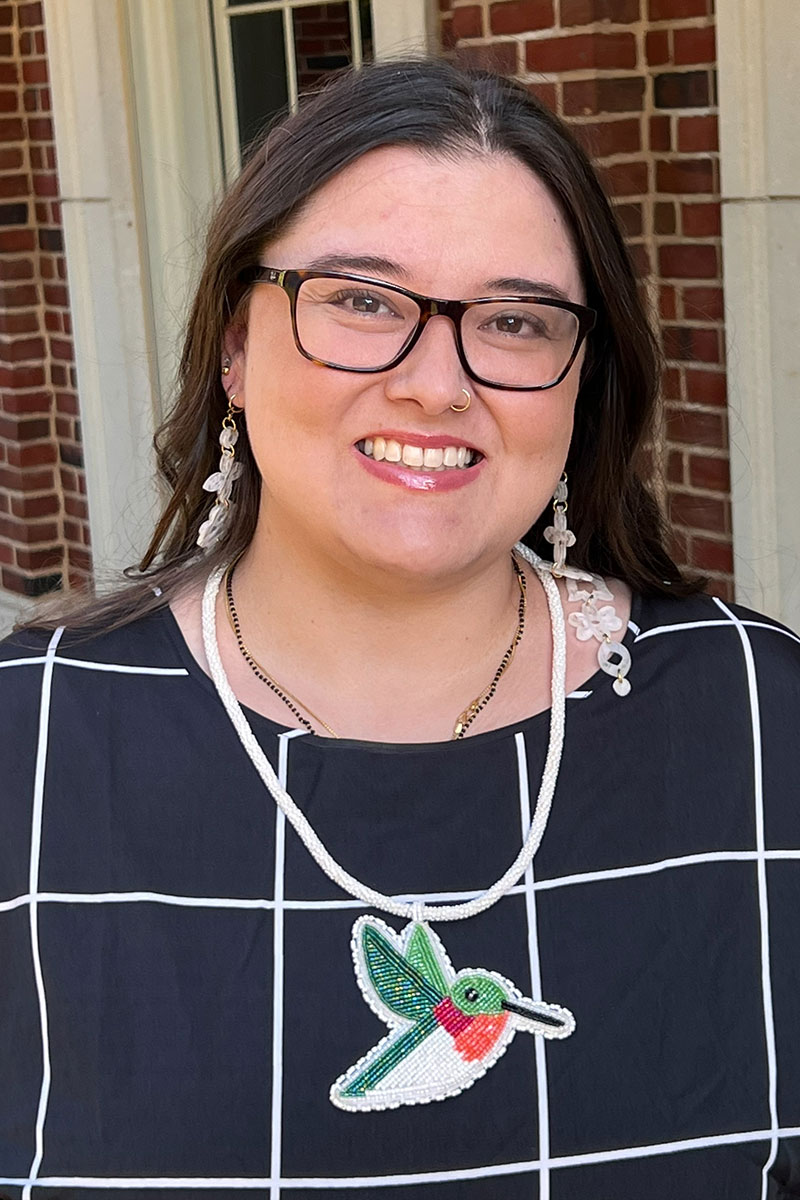Jamie Gajos, MS, PhD (Amount Awarded $25,000)
 The Nexus between Gun Culture and Heavy Drinking Locations
The Nexus between Gun Culture and Heavy Drinking Locations
Alabama has one of the highest gun ownership rates in the U.S. and ranks among the top three states accounting for all gun-related deaths. Although substance use is shown to be associated with gun violence, recent evidence suggests that more frequent substance use, as well as heavy episodic drinking, are also implicated gun ownership and gun-related experiences such as carrying a gun and being threatened with a gun. The current pilot project proposes to examine gun-related attitudes and substance use among a sample of young adult gun owners and non-gun owners (N=500 total) living in Jefferson County, Alabama. The link between gun safety and storage, acquisition strategies, carrying practices, and alcohol and drug use will also be examined. Additionally, we will determine whether young adults living in/near communities with greater liquor or beer consumption—compared to the national average—also report gun ownership or perceived neighborhood gun-violence by using geographical data available through Esri’s Business Analyst mapping software. To our knowledge, no previous studies have used consumer data to examine the link between geographical risk for increased alcohol consumption and gun-related attitudes and behaviors among young adults. Findings from this pilot project will inform individual- and environmental-level prevention strategies to promote gun safety among young adults who use alcohol and/or other drugs.
Akanksha Singh, MS, PhD (Amount Awarded $25,000)
 Evaluation of Client Outcomes and Net Impacts of a Peer Support System for Opioid Recovery.
Evaluation of Client Outcomes and Net Impacts of a Peer Support System for Opioid Recovery.
The overarching goal of this project is to identify barriers and facilitators in achievement of client outcomes, enabled by the use and usability of a Collaborative Health Information System for Peer Support Specialists (CHIPSS) contributing to the opioid recovery peer program. The project is driven by the severity of the opioid epidemic in Alabama, marked by a significant increase in fentanyl-related deaths. The Peer Support initiative, backed by the Alabama Department of Mental Health, employs trained Peers to assist clients in accessing community resources and recovery programs. Peer organizations use CHIPSS to ensure standardized documentation essential for program evaluation and improvement. CHIPSS is well-positioned for future extramural funding; however, it has not been evaluated since implementation. Using a mixed methods approach and the DeLone and McLean Information Success Framework, this project aims to analyze system collected data to understand client outcomes relative to key recovery care metrics. Additionally, we will conduct an analysis of CHIPSS use, satisfaction, net user and organization benefits. Community partnerships are vital to the project, with CHIPSS initially funded by the Alabama State Medicaid and the potential to become the state's community health information network (CHIN). It will leverage and enhance the established trusted relationships developed during prior work with community partners and ALMedicaid.
William Bradford, MD (Amount Awarded $25,000)
 A prospective evaluation of xylazine in patients hospitalized with serious injection related infection (SIRI).
A prospective evaluation of xylazine in patients hospitalized with serious injection related infection (SIRI).
Illicit drugs are commonly adulterated with harmful substances including veterinary pharmaceutical agents (for example, xylazine and levamisole) as well as other illicit substances (for example, fentanyl in methamphetamine supplies). The clinical effects of these adulterants are generally poorly understood. The common adulterant xylazine, a veterinary alpha-2 adrenergic agonist used in veterinary sedation, is increasingly identified both locally and nationally and associated with a variety of untoward effects in people who use drugs (PWUD) including hypothermia, bradycardia, profound central nervous system depression, and, in chronic exposure, highly morbid necrotic skin wounds. The purpose of this study is to evaluate local epidemiology as well as the clinical effect of various adulterants, especially xylazine, among UAB ER patients and inpatients. The specific objectives are as follows:
- estimate the prevalence of exposure to xylazine and other opioid-associated adulterants among inpatients who use opioids;
- explore associations between adulterant exposure and patient characteristics (clinical factors, patient awareness of xylazine, and patient preferences regarding harm reduction approaches for novel adulterants); and
- assess novel adulterant stability and testing in the forensic laboratory setting.
The study population will include adults age 18 years or greater with self-reported active opioid use who are currently either admitted to the hospital or in the emergency room at UAB Main or UAB Highlands Hospital.
Jessica Jaiswal Ph.D., MPH
 Pilot study of medical and institutional mistrust among people who use drugs and people in treatment for opioid use disorder.
Pilot study of medical and institutional mistrust among people who use drugs and people in treatment for opioid use disorder.
Health-related mistrust is largely associated with poorer outcomes across myriad health behaviors and conditions, including preventive cancer screenings and HIV. Although many studies have examined the impacts of mistrust on the health of Black communities, particularly Black men living with HIV, very little is known about how mistrust may manifest among people who use drugs (PWUD). As a population, this group is socio-demographically diverse, but addiction does in fact discriminate; higher overdose risk and worse treatment access outcomes fall along known fault lines of inequity. Specifically, structural racism and classism continue to enforce barriers to care for minoritized populations, including communities of color and low-income people.
This mixed method project will explore how people who use drugs and people in OUD treatment experience mistrust related to their health, including medical treatments (e.g., medications for opioid use disorder), healthcare (e.g., hospital systems, insurance, healthcare providers), the correctional/carceral system, and other social and economic systems that shape people’s daily lives. This pilot will provide preliminary data for an R-series submission. The overarching purpose of this line of research is to inform the implementation of strategies, policies, and processes to increase availability of evidence-based harm reduction strategies, and to increase uptake of treatment for opioid use disorder among people most in need of care.
Calia Morais, Ph.D. (Amount Awarded $25,000)
 Assessment of knowledge, beliefs, and perceptions about pain management: A study with adults living with sickle cell disease
Assessment of knowledge, beliefs, and perceptions about pain management: A study with adults living with sickle cell disease
Sickle cell disease (SCD) is the most common inherited blood disease in the US that disproportionately affects African Americans. Pain is a hallmark feature of SCD due to acute vaso-occlusive episodes (also called pain crisis) of varying severity and location. As individuals age, they develop high rates of chronic pain, intensifying the effects of SCD and its negative impact across many areas of life and functioning. There are no targeted disease-specific methods for managing SCD-related pain. As a result, aggressive opioid management is often used for the treatment of acute pain. However, the benefits of long-term opioid therapy for chronic pain management are negligible, raising the need to explore additional pain management options. While psychosocial treatments are recommended for chronic pain management in other populations, these have been underutilized in SCD. Though barriers to optimal pain management treatment are multifaceted and require system-level changes, it is also crucial to examine factors operating at the patient level that may impact the implementation and adoption of psychosocial treatments for pain management. The proposed project will examine to what extent individuals living with SCD are aware of psychosocial treatment options or willing to engage in psychosocial treatments for pain management. Finding from this study will inform intervention development to enhance patient engagement to participate and benefit from non-pharmacological chronic pain management options in the future.
Scholars Profile
Calia Morais, Ph.D.Angela Carter, Ph.D.(Amount Awarded $25,000)
 Uncovering New Potential Therapeutic Targets for the Treatment of Psychostimulant Abuse
Uncovering New Potential Therapeutic Targets for the Treatment of Psychostimulant Abuse
Amphetamines (AMPHs) are highly effective psychostimulants commonly used for the treatment of neuropsychiatric disorders such as attention deficit hyperactivity disorder. AMPHs are also commonly abused, leading to devastating medical and societal effects. Nonmedical use of Adderall (racemic mixture of AMPH) increased 67%, and hospital emergency room visits increased 156% from 2006-2011. In 2017, AMPHs were the drugs most frequently involved in deaths in four regions that include 19 states west of the Mississippi (geographic breakdown of deaths by drug; C.D.C. 2019.) Recent studies suggest that imbalances in the gut microbiome (dysbiosis) participate in the pathogenesis of drug abuse. Microbial products such as short-chain fatty acids are suspected to play a fundamental role in this process. This proposal will investigate the molecular mechanisms by which the microbiome alters AMPH-induced responses, focusing on regulation of central dopamine neurotransmission and reward processes. We will use the molecular discoveries generated with the support of this pilot award as preliminary data for an NIH R01 application. The goal of this work is to uncover new potential therapeutic targets for the treatment of psychostimulant abuse.
Scholars Profile
Angela Carter, Ph.D.Peter Hendricks, Ph.D.; Jarred Younger, Ph.D. (Amount Awarded: $20,000)


Feasibility and Acceptability of Psilocybin to Treat Fibromyalgia
Drs. Hendricks and Younger will be collaborating on a novel pilot study designed to test the feasibility and potential efficacy of psilocybin in the treatment of fibromyalgia. In this study, participants with fibromyalgia will receive two preparatory counseling sessions, and will then be randomly assigned to receive either psilocybin or the placebo comparator dextromethorphan. Follow-up counseling sessions will take place one day and one week after drug administration. Fibromyalgia symptoms will be monitored daily for 6 weeks after drug administration, allowing for an estimation of the longer-term effects of psilocybin on fibromyalgia.
Scholars Profile Peter Hendricks, Ph.D. Jarred Younger, Ph.D.
Edwin Aroke, Ph.D., CRNA (Amount Awarded: $20,000 from CAPPI; $25,000 from OHDRC)
 Determining DNA Methylation Links to Obesity and Chronic Pain
Determining DNA Methylation Links to Obesity and Chronic Pain
Chronic pain and obesity are highly prevalent in the United States and disproportionately affects African Americans (AA). Specifically, AA are 15% more likely to suffer from obesity than Whites, 7 out of 10 AA ages 18 to 64 are overweight or obese, and AA report more experimental pain sensitivity and more severe and disabling chronic pain than whites. The exact cause of the high prevalence of obesity and chronic pain in AAs remains unknown. Cumulative evidence suggests that the relationship between obesity and chronic pain is multifactorial (involving the interaction of genetic and environmental factors) and multidirectional (obesity increases pain, pain increases obesity, and chronic pain and obesity are comorbid conditions). Epigenetics is one mechanism that links environmental factors to gene expression without altering the DNA sequence. For instance, DNA methylation (DNAm) is a reversible epigenetic mechanism by which environmental factors alter which genes are turned-on or turned-off without changing the DNA sequence. Thus, we hypothesize that the DNAm of genes that regulate metabolism and inflammatory processes play a critical role in the development of obesity and increase pain sensitivity. To test this hypothesis, we will explore the role of DNAm in the obesity-pain link in 50 (25 obese and 25 non-obese) AAs, which is an essential step in understanding the underlying mechanism. The next critical step is to show that the observed DNAm changes result in alterations in gene expression. Thus, we propose to examine the transcriptome to identify expressed genes and their role in the obesity-pain relationship. Given that the epigenome is subject to change and can be modified, we expect that our findings would provide a basis for the development of targeted interventions to treat obesity and pain.
Scholars Profile
Edwin Aroke, Ph.D.Jeremy Day, Ph.D.; Robert Sorge, Ph.D. (Amount Awarded: $25,000)

 Understanding the Molecular and Genetic Associations between Chronic Pain and Opioid Euphoria
Understanding the Molecular and Genetic Associations between Chronic Pain and Opioid Euphoria
Many individuals suffering from opioid abuse disorder first encounter opioids in a clinical setting related to a long-lasting pain state (e.g., surgery). However, although chronic pain influences the desire to take drugs of abuse, we know very little about how pain states alter the molecular response to opioids in brain circuits that mediate the transition to drug addiction. This pilot proposal will foster a collaboration between two laboratories with unique expertise in pain (Dr. Sorge) and molecular mechanisms of addiction (Dr. Day) to help define how chronic pain alters the molecular and genetic signatures in key brain regions that contribute to the euphoric effects of opioids. Using an animal model, this proposal will combine opioid drug exposure in chronic pain states with cutting-edge single-cell molecular profiling approaches, yielding a novel cellular atlas for discovery-based identification of new cellular and molecular targets for therapeutic intervention.
Scholars Profile
Jeremy Day, Ph.D. Robert Sorge, Ph.D.